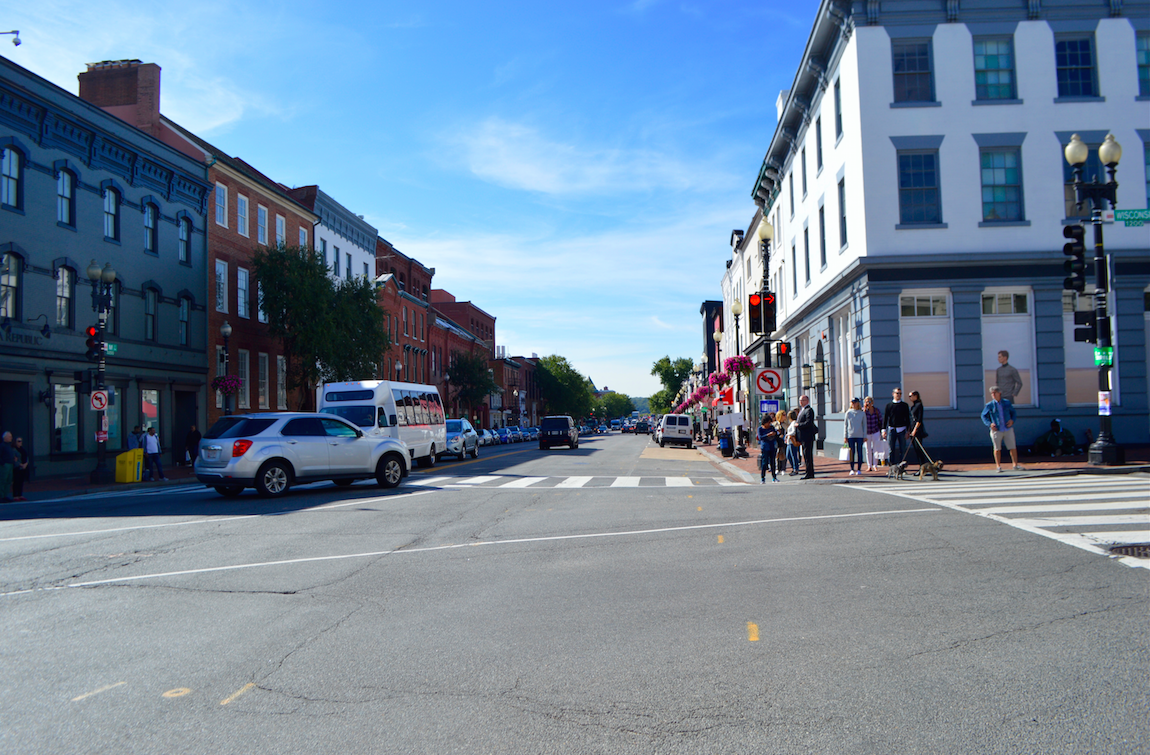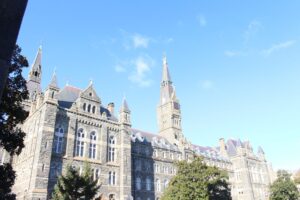As federal stimulus loans run out and governments begin to lift dine-in restrictions, an increasing number of Georgetown neighborhood businesses have closed or are struggling to remain open.
Under Phase Two of the District of Columbia’s COVID-19 reopening plan, restaurants, cafes, and non-essential retailers are permitted to resume indoor and outdoor service at up to 50 percent maximum capacity. Still, this isn’t enough to guarantee businesses stay afloat.
Martin Tavern’s owner Billy Martin described the difficulties of keeping a restaurant open during the pandemic. “Well, since March 26th it’s been very difficult. Every month, with the exception of September, we have run negative, he said. “Given the layout of our restaurant and having to abide by the six foot distancing [regulations], that only allows for about nine tables out of 25 and no bar seats [inside].”
As the winter months approach, lifeboats like outdoor seating seem increasingly temporary.
“The additional outdoor seating is really carrying us at this point. However, we are very concerned with when the weather converts to extreme cold,” Martin said. “Nine tables will not allow us to keep the 40 percent of staff that we have been able to bring back and/or sustain business to operate. Having to close for even a month could have devastating consequences.”
According to owner Ian Hilton, Georgetown’s Chez Billy Sud is still open, but its future is uncertain. Hilton and his brother are already closing seven of their D.C. bars indefinitely on Oct. 31, stating that they no “longer have the capability to keep that fight going.” Other restaurants, such as 1789 and The Tombs, have completely closed at least temporarily.
Popular national breakfast chain, Le Pain Quotidien, permanently shut down in Georgetown. José Andrés’s America Eats Tavern, the venue from ThinkFoodGroup, closed after only two years at its M Street NW location.
“As many restaurateurs face tough choices for how to re-open and rebuild, we have had to review all of our real estate commitments to ensure we evolve with the changing business landscape in support of our guests and teams. We are deeply grateful to the incredible teams and the communities that have supported these restaurants,” ThinkFoodGroup wrote in a statement to Eater.
The pandemic has also presented challenges for the retail industry— after 36 years in Georgetown, Cherub Antiques Gallery closed its M Street showroom, while Bogart Salon quietly did the same after 40 years in business. In April, Rent The Runway announced all of its retail locations, including the one in Georgetown, would close. Toronto-based clothing retailer Roots Corp. went on to do the same. By June, Brooks Brothers announced its Georgetown location was among eight stores that would not reopen. Dozens of other clothing stores in the neighborhood have since gone under.
In the earlier months of the COVID-19 pandemic, roughly four percent of D.C. restaurants were closed and limited to curbside pickup or delivery operations. At the time, D.C. Chief Financial Officer Jeff Dewitt anticipated a budget shortfall of $722 million for this year. In late September, he reported $222 million more in revenue than what was initially expected, but the D.C. economy is still not expected to begin recovering until at least 2022.
“The recovery is taking a bit longer than we had assumed back in April, when we were guessing,” DeWitt said in a news conference last month. “Based on the reality of what we now know about vaccine delivery, about where the virus is, about the actions we’ve had to take to keep the community safe and keep the economy going as best as possible … you’re looking at maybe a year later on conventions, you’re looking at six months later, for the reopening of restaurants and hotels and our assumptions.”





